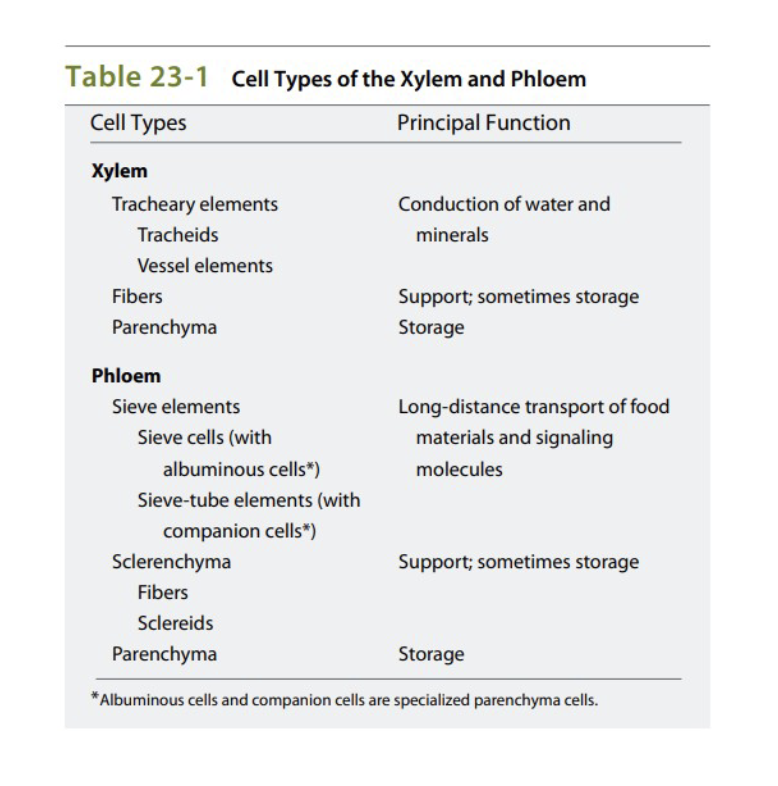BIOL Test 2 - Plant tissues
1/30
There's no tags or description
Looks like no tags are added yet.
Name | Mastery | Learn | Test | Matching | Spaced |
|---|
No study sessions yet.
31 Terms
Monocot and Dicot Differences
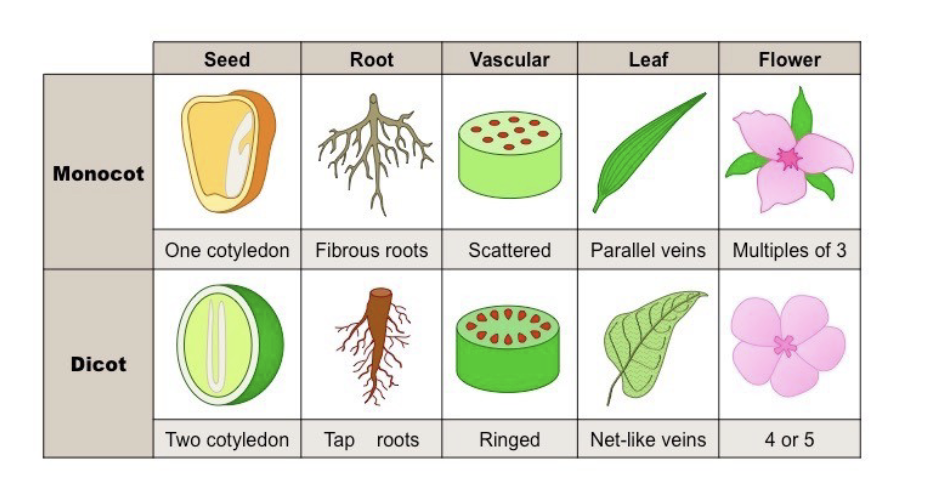
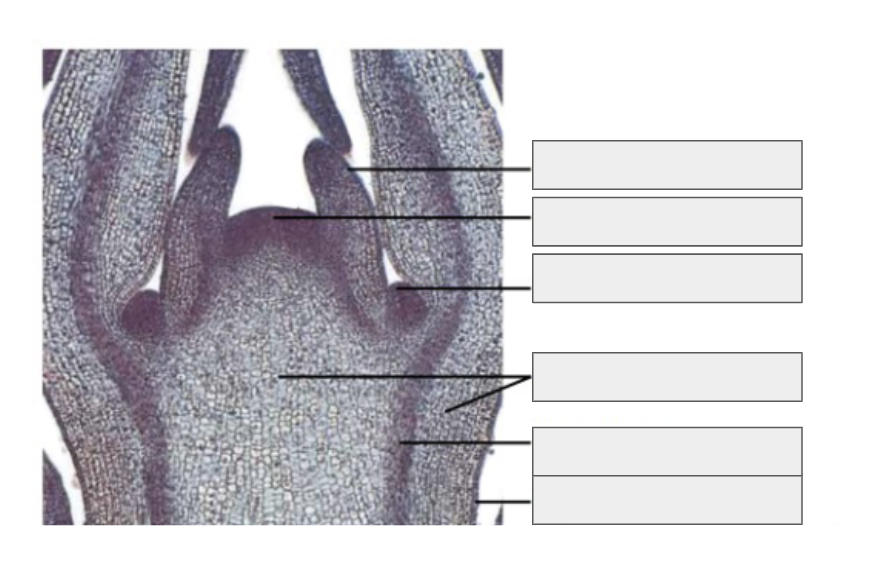
What is this an image of and label the parts
SHOOT apical meristem
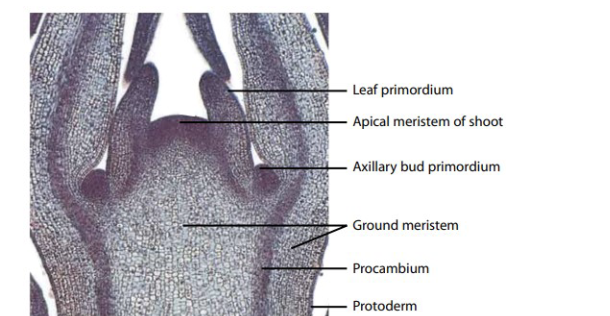
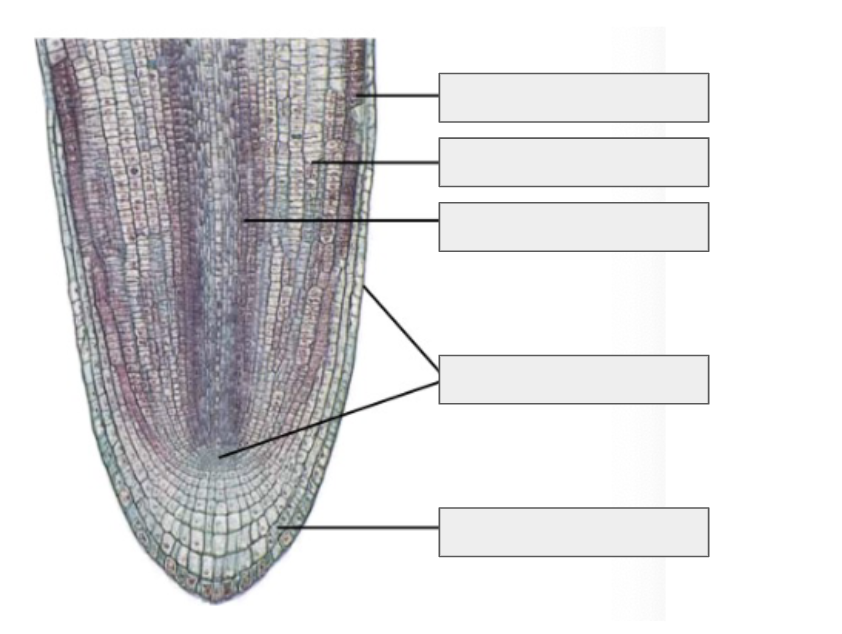
What is this image of and label the parts

What tissues do the apical meristem produce for the plant?

What are the events of Development that plants go through?
Growth: an irreversible increase in size
Morphogenesis: controls the shape or form of a plant body
Differentiation: cells with identical genetics become different
How is differentiation viewed?
Often viewed in terms of determination and competency
Determination: the progressive course of development that result in the loss of capacity to resume growth
Competency: the ability of a cell to develop in response to a specific signal
What are the three types of tissues in plants?
Parenchyma
Collenchyma
Sclerenchyma
What are Parenchyma cells
generally occur in continuous masses like the cortex and pith of shoots, mesophyll of leaves and found in flesh of fruits.
Since parenchyma keep their meristematic ability, they play a big role in wound healing and regeneration, as well as being totipotent.
Main roles: photosynthesis, storage, and secretion
What does Totipotent mean?
can become embryonic and give rise to new plants
What are Transfer cells?
They are parenchyma that have “funky” cell walls due to ingrowths that increases the surface area for movement of solutes over short distances. Often associated with the Xylem and Phloem
What are Collenchyma?
Typically elongated with an unevenly thickened (non-lignified) primary cell wall, which allows felxibility and can develop as the plant grows. Primarily found in herbaceous plants in organs that undergo no secondary growth. (rarely found in roots)
What are Sclerenchyma?
Found in all parts of the primary and secondary plant body, characterized by their thick, lignified, secondary cell wall. Important for strengthening and supporting plant parts that have stopped growing.
There are two types:
Fibers: long and slender, often in strands or bundles
Sclereids: variable shape, short compared to fibers.
Which of Parenchyma, Collenchyma, and Sclerenchyma is alive at maturity?
Parenchyma: alive
Collenchyma: alive
Sclrenchyma: dead at maturity
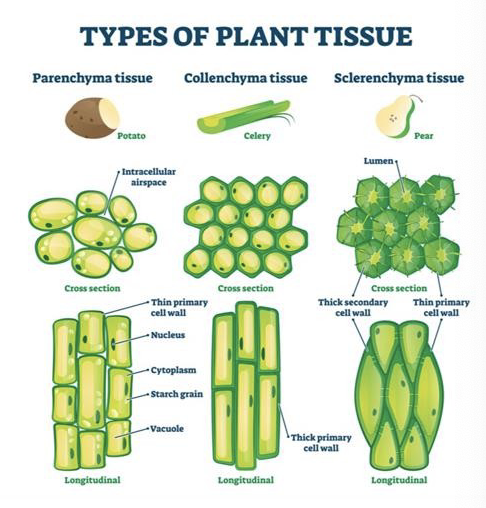
What is the Dermal Tissues of plants?
Also known as the Epidermis, it covers the leaves, floral parts, fruits, seeds, and stems and roots until secondary growth. Main function is retard the loss of water with cuticle of cutin and waxes.
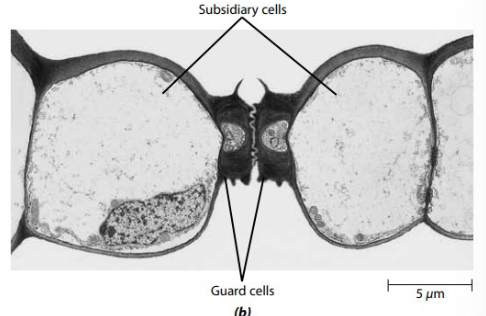
What does the Stomata do for plants?
Protected by chloroplast containing guard cells that are associated with subsidiary cells, that controls the movement of gases and water vapor. Stomata are most abundant on the underside of leaves
What doe Subsidiary cells do?
Act as water and ion reservoir
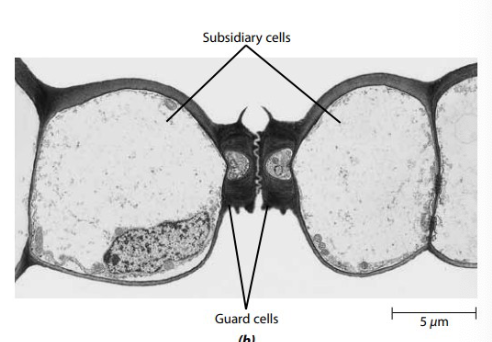

Which of these are stomatas of Dicots and Monocots
right: Monocotss (more organized/parallel)
Left: Eudicots (scattered)
What do Trichomes do?
Many functions such as absorb water and minerals (root hairs), increase in trichome number may reduce solar radiation, temperature, and lower water loss.
What other Dermal tissue that may develop besides the Epidermis?
Periderm: replaces the epidermis in steams and roots that have secondary growth. Consists of a protective cork (non-living with suberized walls)
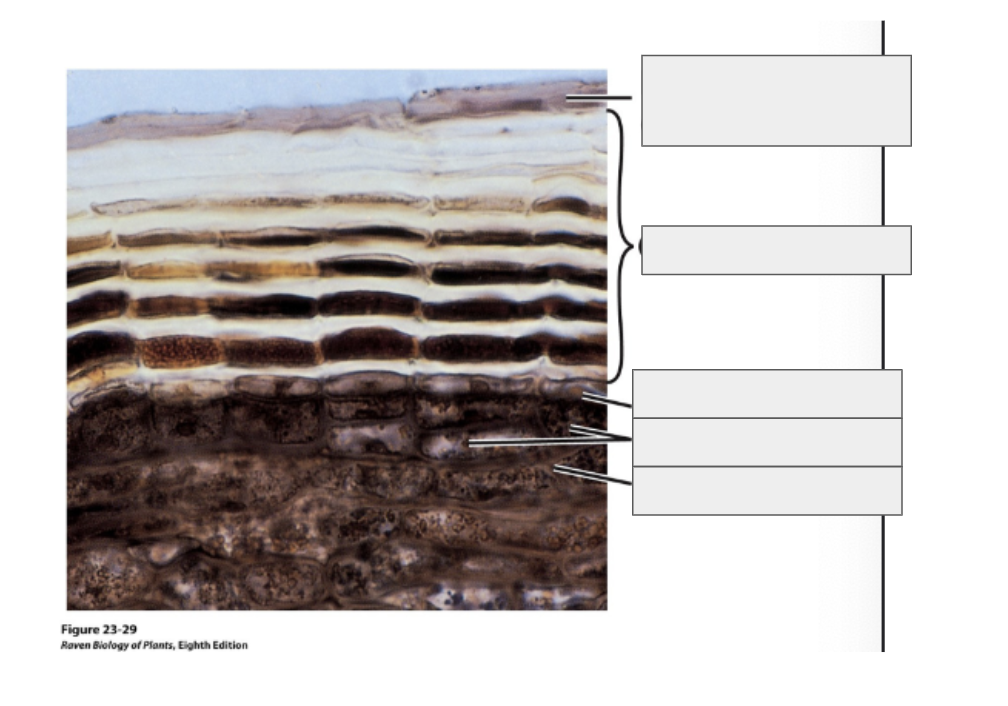
Label this diagram and what does it represent?
The Layers of secondary growth, particularly periderm.
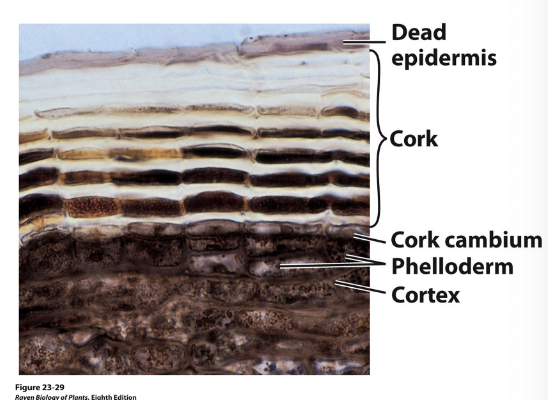
What does the Cork Cambium and Phelloderm do?
they are parenchyma-like tissues that are living. The cork cambium forms the cork to the outside and phelloderm to inside.
Function of the Xylem?
major role is to conduct water, but also moves minerals, provide support, and plays roles in food storage.
What is the Xylem composed of?
Composed of two types of Tracheary Elements: Tracheids and Vessel Elements that are both elongated cells with secondary cell wall that lack protoplast
Differences between Vessel Elements and Tracheids
Vessel Elements: contain perforations and lack both primary and secondary cell wall.
Tracheids: less differentiated and only in water conducting cells in gymnospersm and seedless vascular plants.
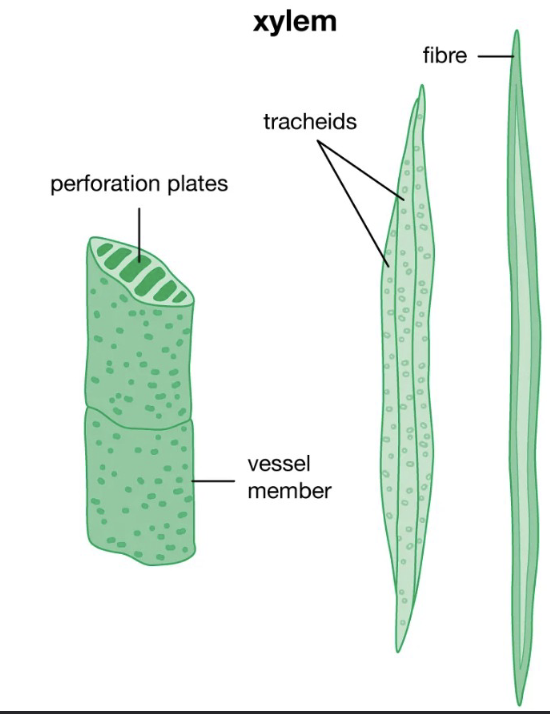
Function of the Phloem
principal food-conducting tissue of vascular plants, and long distance signalling occurs.
What are the components of Phloem Tissues?
Principal Cells: the sieve elements and there are two types
Sieve Cells: found only in gymnosperms
Sieve-tube elements: found in angiosperms

Differences between the Sieve cells and Sieve-tube elements
Sieve Cells: narrow pores, pores in sieve areas are uniform on all walls
Sieve-tube elements: have sieve areas that vary in the size of their pores, areas with larger pores are called sieve plate.
Is the Phloem alive?
Phloem is living but undergoes huge changes like the breakdown of nucleus and tonoplast. Loss of Ribosomes, golgi apparatus, and cytoskeleton. Remaining structures (ER and Plasma membrane) are moved to the wall and some plastids and mitochondria may remain.
What do Companion Cells do?
provide substances to sieve elements since they have all organelles intact
Summarize the Cell types of Xylem and Phloem
